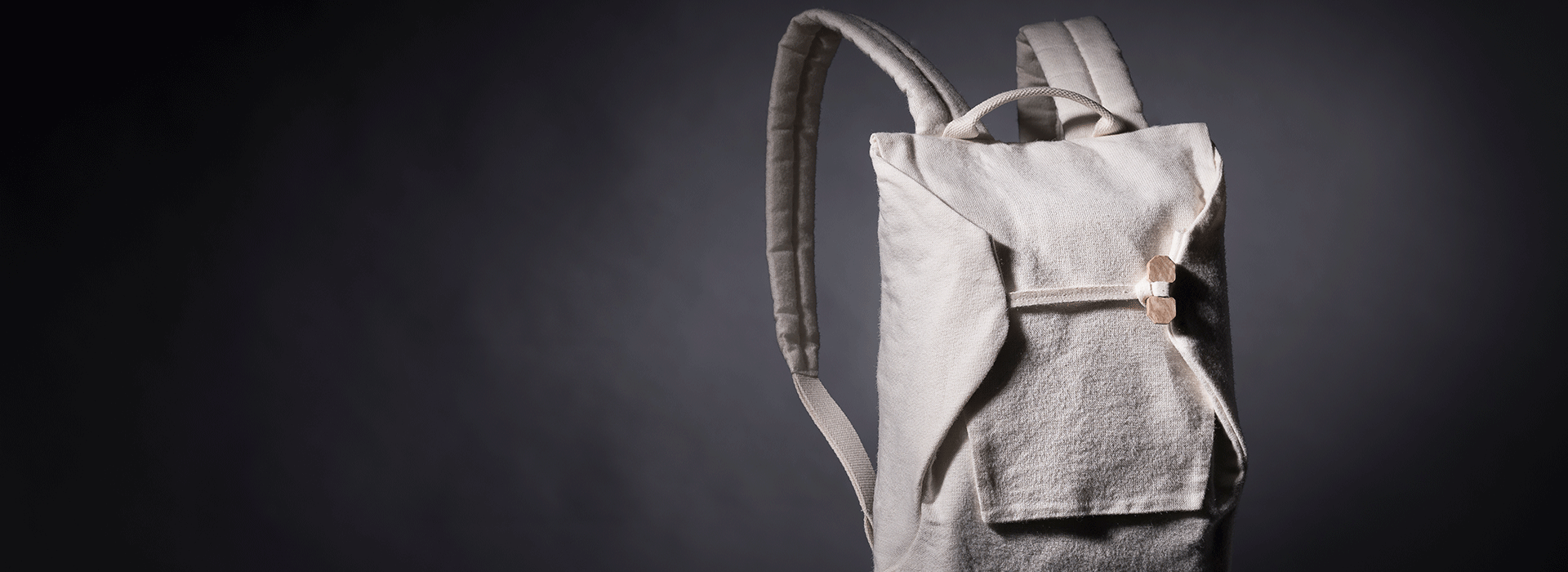The Perfect Fabric
By Doug Schnitzspahn

It’s tough to impress the jury of the Scandinavian Outdoor Awards (SOA). This grizzled group of veteran European outdoor journalists, photographers, and industry experts delights in spending long hours arguing over midsoles and debating the merits of pit zips. They also put the products under consideration to the test out in the Alps before the biannual ISPO show in Munich (this summer they deliberated over Zoom). But, when the jury met in January, Bergans of Norway impressed this group of curmudgeons with a product that never had to leave the hotel. The Bergans Future.Labs.05.A fabric—which the brand submitted in the form of a casual pack— is the most sustainable fabric the jury has ever seen.
The fabric—a collaboration with Finnish textile manufacturer Spinnova—uses a process that creates a pulp of plant cellulose from Scandinavian FSC-certified wood or waste straw from agricultural production. That pulp is then turned into a fiber. This whole process uses no chemicals, and all the water it requires is evaporated and reused. The result is a fabric that can be crafted into a pack or apparel and then recycled and used in a brand new iteration with no waste.
“To make a high-quality textile fiber from cellulosic feedstock with very limited chemical use is unique,” says Joel Svedlund, sustainability advisor at Swedish research and development group Peak Innovation and member of the SOA jury. “The main challenge in cellulosic-regenerated fibers such as viscose and modal has been the chemical load required to reform the cellulose to a textile fiber with next-to-skin qualities.” The new fabric requires no such process.
“The process is repeatable,” says Svedlund. “You can take the same material, dissolve it, and make new fiber in the same process again. This is a great step toward circularity.” In other words, the fabric can be reused in perpetuity. In fact, Begans Future Lab designer Johannes Flem claims Spinnova’s lab tests show that the material actually increases in performance ev- ery time it’s upcycled.
“Chemical dissolving means most materials decrease their performance when recycled (strictly speaking, material downcycling), but this is not the case with Spinnova,” says Flem. “This property makes it a premium candidate for our experiments in circular business models.” Taking it a step further in its upcoming Collection of Tomorrow line, Bergans emphasizes the value of the fabric as part of a product. “The people who purchased the backpack have the opportunity to return the pack, and the value of the material will be deducted from the cost of a new product from the Collection of Tomorrow,” says Flem. “We will recycle the product they returned into new Spinnova fibre for new products in the Collection of Tomorrow. What’s not to like?”
There’s just one catch. As of yet, the fabric does not have a true practical application, beyond, say, the casual day pack the SOA jury checked out. “It’s very much an experimental material. Although the fabric is awesome in many ways, it’s not exactly the perfect backpack material,” says Flem. “But our partnership with Spinnova will continue. We are finishing the second stage of Spinnova fabric innovation and have begun on stage three. We fully believe that fabrics using Spinnova fiber can replace cotton or viscose fabrics in the future.”
Svedlund, for one, believes the brand is pioneering a new level of real sustainability. “They are making conscious choices to find better materials and production methods, and phase out less desirable chemistry,” he says. “They have also spearheaded new business model trials, including rentals, selling second hand, repairing, refurbishing, and remaking used products.”
The takeaway? The sustainable future will be truly circular, with products and materials that will be used over and over and over again.